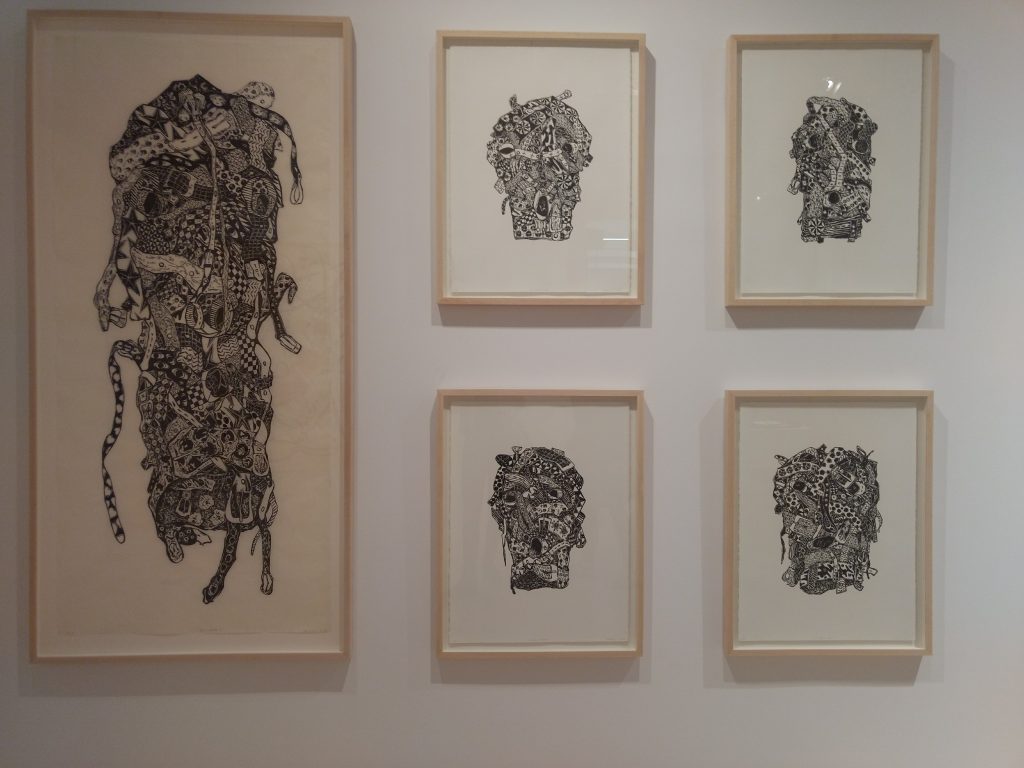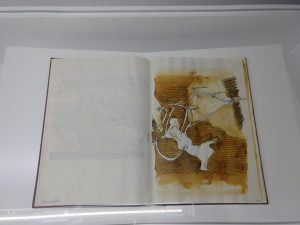Concordia painting and drawing professor, François Morelli, exhibits his life’s work
Large-scale ink and watercolour drawings adorn the walls of 1700 La Poste, while wire sculptures take over its main floor space. The pieces were crafted by François Morelli, a professor of painting and drawing at Concordia whose work ranges from free drawing and sculpture to performance and ink stamping.
Pieces straight from Morelli’s sketchbook are linked together to create a mural in the upstairs balcony space of the gallery. Morelli’s Belthead project rests in the back room of the gallery. Huge, colourful drawings of tangled belts cover the walls like vines, bringing attention to a sculpture by the entrance, which inspired the drawings.
In a documentary which screens every 10 minutes after the hour in the gallery’s basement, Morelli says: “Do what you do because it is important to do it.” It is a message that will resonate with most people regardless of their involvement in the arts. With his work, Morelli creates a whimsical world where it’s okay to make mistakes. Ink blotches, both large and small, are welcome.

Morelli explained that he often starts drawing with a few random strokes and continues intuitively from there. In most of his work, the viewer is able to see lightly painted lines that could have transformed the piece into something completely different, yet the artist chose not to follow them. His approach is authentic and unfiltered—a process which was likely taught to him over the course of many years.
As a painting and drawing student at Concordia in the 70s, Morelli began doing rubbings of the trees on his street and measuring the distance between them. Rubbing involves placing a sheet of paper on a textured surface and rubbing it with a pencil or another medium, so the textured pattern of the surface transfers onto the paper. According to the artist, his goal was to make a large drawing on a scroll that would interact and engage with what was on the street by including textures, lengths and measurements.
“As I was doing this, the police stopped me, asking me what I was doing. I told them I was making a drawing, making art,” the artist said. “From that point on, I realised that, in doing this, I would be interfacing with people and they are going to be asking me questions.”
Morelli said that over the years, he has been building on the idea of social movement. He explained that, in using public spaces for his art, he takes an anthropological approach to his practice and works with historical sites and the social, political and economic realities surrounding them. Architecture, the sidewalk, people and the flow of people in transit all became involved in the artist’s performance work.

A sculpture from one of Morelli’s collections, titled Marche Transatlantique, is featured in the exhibition. Marche Transatlantique was the result of a romantic affiliation and a personal invitation. In this performance piece, Morelli walked with the absurd, grotesque sculpture on his back from the Berlin Wall to Philadelphia, where he was invited to participate in an exhibition. This performance was the second of three walks. The first was Migration, which involved a hay sculpture being carried from the United Nations to St-Jean-Port-Joli, Que.
Creating art, teaching art and performance art have a symbiotic relationship in Morelli’s body of work. One cannot exist without the other.
François Morelli’s exhibition will be on display at 1700 La Poste (1700 Notre-Dame St. W.) until Dec. 17. The gallery is open from 11 a.m. to 6 p.m., Wednesday to Sunday.




